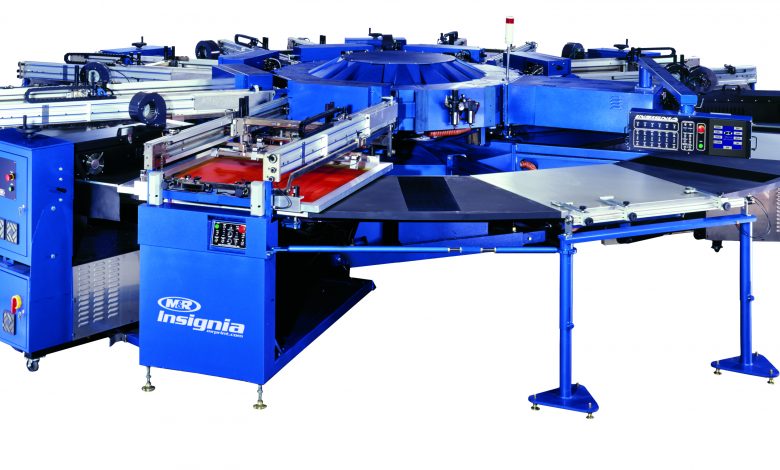Screen Printing Adds Pizazz to a Print
Looking at screen printing inks and how they impact the sign industry.
Inks have taken a prominent place in the sign industry for several years, literally providing the color to many projects. Historically, paints have given sign makers the ability to offer popping, handcrafted works of art. As work shifted from unique, one-off work to high-volume production, so did the processes. These days, all different types of inks are available for printers that output precise, preset designs. And never lost in the shuffle are screen printing inks that have been an asset, not only in the sign market, but apparel and textiles for decades. Though technologies have changed, and sign makers may have moved to other methods for their work; advancements continue to occur in screen printing. This is evident in inks.
“Each ink has its own set of characteristics,” explains Mark Landrowski, vice president of operations, NGS Printing. “It is what makes screen printing so versatile but also so difficult to master.”
With screen printing, sign makers carry the ability to produce easy-to-handle signs such as real estate displays, posters or trade show graphics. These can be completed on any number of substrates-not just textiles-and the finished product is typically simple to install and move, if necessary. But one of the biggest difference makers with screen printing resides with the ink.
Latest Offerings
“Over the last decade we have seen inks become healthier to be around, but oftentimes in exchange for ease of use,” says Matt Marcotte, regional sales consultant, T&J Printing Supply.
As trends shift and technology improves, it is important that quality does not take a hit. In ink production, manufacturers have found ways to make products safer but also more compatible with screen printers’ goals.
“Some of the easiest inks to use in the past were some of the most toxic solvent inks,” continues Marcotte. “However, with the many updates to the ink chemistry, inks like UV inks have become very popular. We don’t have to worry much about them trying to dry in our screen. As long as we have a good UV dryer, we fully dry our inks and the usability is super simple.”
The concept of a faster-drying ink is very attractive to screen printers. It allows them to increase production time while also improving color quality and durability. And this leads to a more efficient shop in general.
“I think LED technology could be a very positive change for the industry in the future,” says Landrowski. “Reducing energy consumption on equipment and allowing UV inks to be cured without excessive heat created by mercury vapor technologies. The cost of LED curing devices will have to come down for this technology to likely be more viable used in more screen printing segments of the market.”
The benefits that UV inks bring to screen printing cannot be ignored. Neal Steward, Digital Department, DKMSales.com/RealEstateSigns.com, stresses that, “The most significant development has been in UV-cured inks that are replacing the use of most solvent based inks, reducing VOC exposure to press operators and the environment.”
For the end product, these inks also allow for more variety in all of the components of the sign.
“The newer formulations are more versatile and will adhere to a wider range of substrates,” Steward shares. “This allows us to stock colors in only a few lines of ink.”
Because the latest versions of inks can be used so freely among substrates, screen printing has expanded to include more projects. Popularly thought of as a means to create custom T-shirts, sign makers have also reaped the benefits of screen printing processes.
“As with each ink, materials are infinitely variable and require a knowledge of each in conjunction with the ink to make sure the results are what you are looking for in the specific application,” states Landrowski. “Both visually in appearance and mechanically depending on where the product is being used and ultimately trying to meet the criteria of the consumer.”
The Non-Traditional Inks
It’s not surprising when a company, or even an individual for that matter, decides to step outside the box and try something that’s considered “against the grain.” After all, isn’t that how peanut butter and jelly sandwiches came to exist?
With signage, there are styles and techniques that tend to put a different spin on what was once considered mainstream. In screen printing, non-traditional inks are the catalyst to such a movement.
“There are many specialty inks available that can provide some very creative results in many markets,” tells Landrowski. “Glitters, specialty clears (like dry erase or anti-graffiti), chalkboard inks, thermochromic, hydrochromic, scents, fluorescents, imitation mirror, scratch off, and signature line whites.”
That’s a very lengthy list, and one that Landrowski admits is probably omitting even more options.
Steward points to others such as phosphorescent, pearlescent, metallic, transparent, photochromic, thermoformable, conductive, non-conductive and more, such as “opaque ink films (that) require course mesh to lay down more ink, especially white or light colors over a dark substrate.”
So now it’s easy to see how a once-standard set of inks have been transformed to add more pizzazz to a print.
“Specialty pigments and inks play a huge role in sign and graphics printing because these inks cannot be printed in most digital printers,” Steward suggests, “and they add impact or functionality to the final product.”
Some of these options are used in more applications than others. They are very noticeable and bring an added dimension to the sign.
“The most popular non-traditional ink for signage that I have seen over the last year is reflective ink,” Marcotte says. “These are in high demand for signage, apparel, and most everything safety- and sport-related. Offering high visibility, reflective signage is a great upsell to almost any customer trying to make sure their signs either stand out or are better seen for safety concerns.”
Again, when dealing with any of these inks, sign makers will want to consider not only the look of the final product but how the ink behaves during the printing process.
“Typically, when printing on plastic substrates, you want to use an air-dry ink,” suggests Caleb Morgan, social media marketing/webmaster, Texsource Screen Printing Supply. “These have similar properties to water-based inks in that they can easily dry on your screen if you’re not careful to flood in between prints. Air-dry inks are ideal for sign printing because of the short cure time. ColorFX offers a high- quality air-dry ink solution, even a phosphorescent ink.”
Digital Versus Screen
It’s probably unfair to compare wide-format digital printing with screen printing. Even though the layperson may not be able to distinguish a finished-product digital print from a screen print, shops realize the discrete differences. One wouldn’t employ screen printing for a massive building wrap, for example.
“With wide-format printing, you’re able to print things like large wall graphics/stickers, vinyl banners,” explain Morgan.
The two disciplines are “apples and oranges” when placed side by side. Yet, advancements in digital printing have had an impact on screen printing, as sign professionals will admit.
“Absolutely they have,” says Marcotte, “with automation and solvent or UV inks, the digital world has been able to take a large portion of the market and even have become many shops’ preferred outsourcing method.”
Digital printing is useful in both wide- and small-format projects, depending on the size of the printer. And with its increasing popularity comes some wariness for screen printers.
“Shops with wide-format and flatbed printers are usually able to output at a higher pace, as well as track their per-unit material costs much more efficiently,” continues Marcotte, “making them a force to be reckoned with in the industry. It’s not an ‘endgame’ for traditional screen printers, but it is something that we will continue to see the market shift more and more towards.”
However, there can be benefits to the presence of digital printing’s decline, if looked at through an optimistic lens.
“I feel digital printing has impacted screen printing positively in that screen printing is not needed any more to do the things that the digital printing process excels at,” explains Landrowski. “I feel screen printing can now be used in areas that it was intended for.”
Landrowski prefers to focus on what screen printers excel at-improving upon what has been a successful and dominant part of the practice for years. He believes screen printing offers, “Specialty prints and effects, vibrant colors, specialty applications and things that digital printing is not good at.”
It’s best to look at digital and screen options as ways to improve a sign shop’s operations simultaneously rather than a combative head-to-head competition of processes.
“I feel the processes are very complimentary,” says Landrowski, though he says he does think screen printing has lost market share to digital. However, “I see both as being needed and viable technologies going forward,” he continues. “In fact, many of the projects we do use both technologies. An easy example is that digital printing struggles with white as it is typically a very slow and very expensive endeavor. We screen print whites both under and behind digital prints as a more cost effective and many times better method of production.”
Morgan also sees an inclusive marketplace for both ways of printing.
“Both wide-format printing and conventional screen printing equally have their place,” he says. “I think it depends entirely on what the customer is looking for and what their budget is.”
Costs can come into play if a sign shop has a job to consider and both screen printing or digital printing may be appropriate options.
“Screen printing signage is still one of the most efficient when it comes to price of equipment,” states Marcotte. “Many table top units are available on the market for reasonably cheap, where the digital flatbed counterparts tend to have a steep price tag on them.”
Aside from the equipment, time and volume also play factors into costs.
“This (digital) method of printing can also be more cost and time effective. On the other hand, a screen-printed sign will typically last longer and is affordable for simple high-volume jobs,” says Morgan. “Likewise, screen printing can have high setup costs, slower turnaround times and your material size is limited. You have to take all of these things into account, and again both methods have their place.”
At the end of the day, however, it may be the customer that makes a final determination between digital and screen printing. Because, even with new technologies being released constantly, there are still areas where screen printing remains the best possible solution.
“I think the value of a screen-printed sign or project is in the eye of the consumer,” says Landrowski. “The things that screen printing is able to achieve are truly amazing and some of our most interesting projects ever have involved specialty screen printing. I think screen printing is chosen over other print methods when the client is looking for something specific that other methods cannot achieve.”









